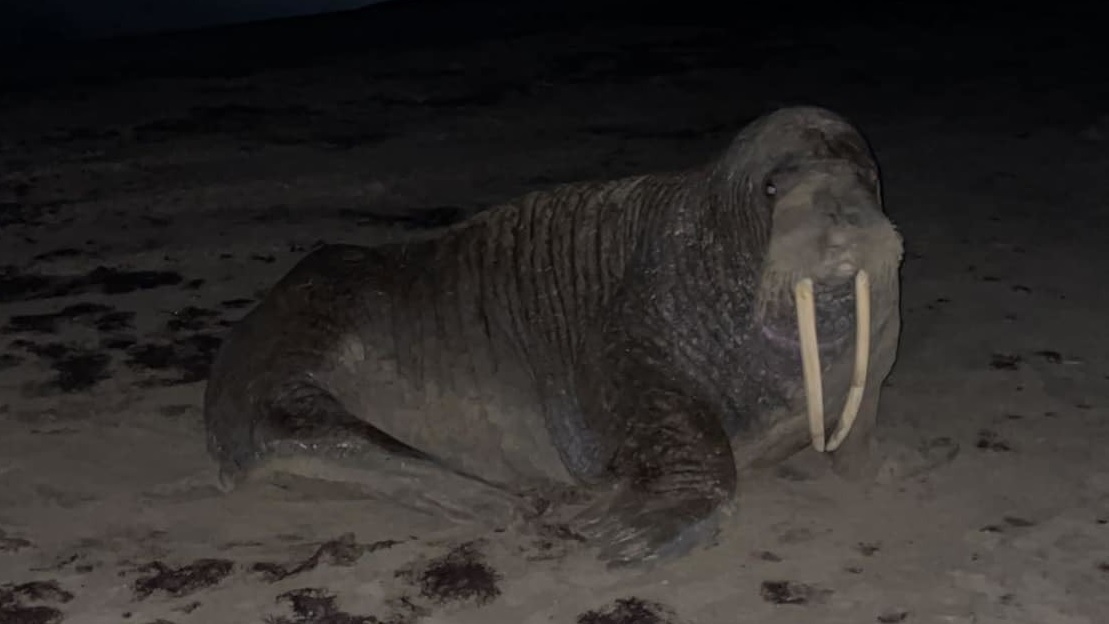Similarly discombobulated thoughts no doubt passed through the minds of witnesses late July 3 when they saw a walrus sitting on Liepāja beach.
Liepājas pludmalē šonakt manīts valzirgs, liecina aculiecinieku uzņemts foto. pic.twitter.com/kLFZln3AQp
— LTV Ziņu dienests (@ltvzinas) July 4, 2022
It later returned to the sea, but in response to the sighting, the experts of the Nature Protection Board are urging people not to approach the animal if they see it, as it can be aggressive and, despite its appearance, is very agile. The Nature Protection Board asked that if the animal is seen in other coastal areas, to report it by writing an e-mail to [email protected].
Even though walruses live in the Arctic Ocean and nearby seas in northern latitudes, one has been seen on the coasts of Germany and Poland recently. It is possible this is the same individual on a round-Baltic tour.
Valdis Pilāts, a mammal expert of the Nature Protection Board, stated that this is the first case when such an unusual marine animal has been found on the shores of Latvia.
"His natural environment is cold and icy waters. Therefore, the Baltic Sea is not suitable for a walrus, because the usual menu is not found here – large clams, shrimps, crabs, soft corals, sea cucumbers and other creatures characteristic of the northern seas. And it is likely that right now the animal feels hungry and tired. Walruses can be compared to their closest "relatives" seals, which spend most of the day in the water and on the shore, or resting on the ice. Of course, walruses do not perceive humans as food objects. However, if a person comes too close, the animal may bite in self-defense. Therefore, we ask you not to approach the animal and let it rest in its chosen place," he explained.
A walrus can stay under icy water for up to half an hour without breathing air and his subcutaneous fat layer can reach up to 15 centimeters. However, despite its mass, it can reach high speeds. The animal's tusks can reach up to a meter in length. In recent decades, the balance of the population has been disrupted by professional hunters, who have threatened the North Atlantic walrus population and pushed them closer to extinction. The walrus is recognized as an endangered species. It reproduces slowly and lives in areas that are becoming polluted with oil and chemical waste.
As yet, no sightings of a parliamentary penguin singing Hare Krishna have been reported.





























